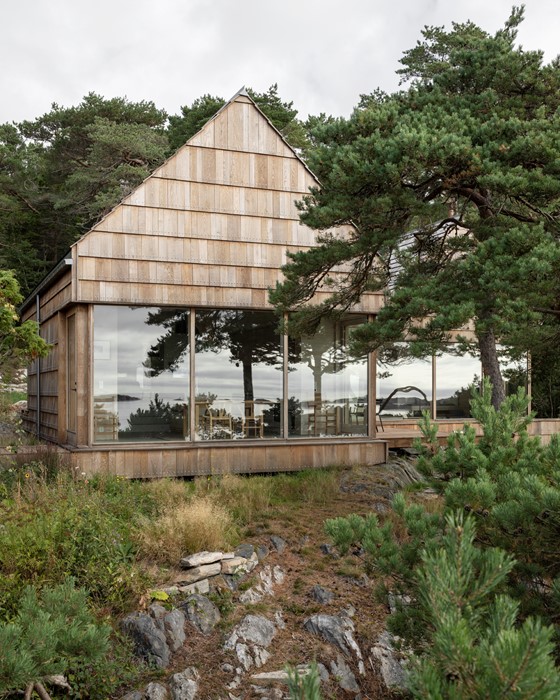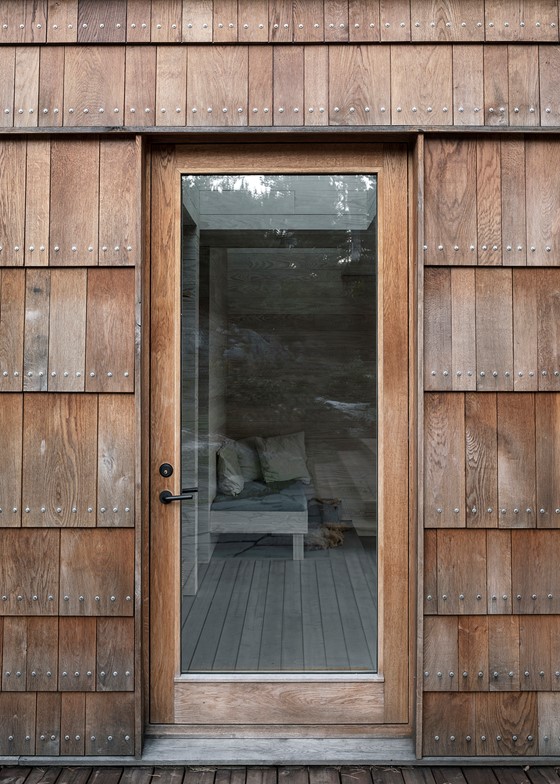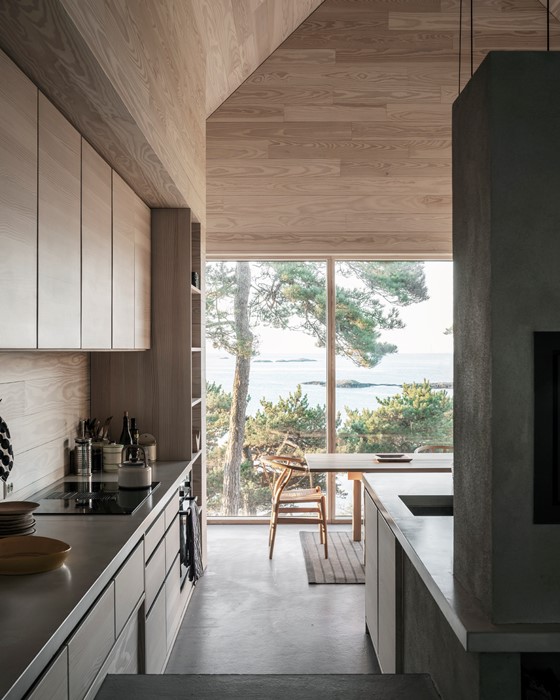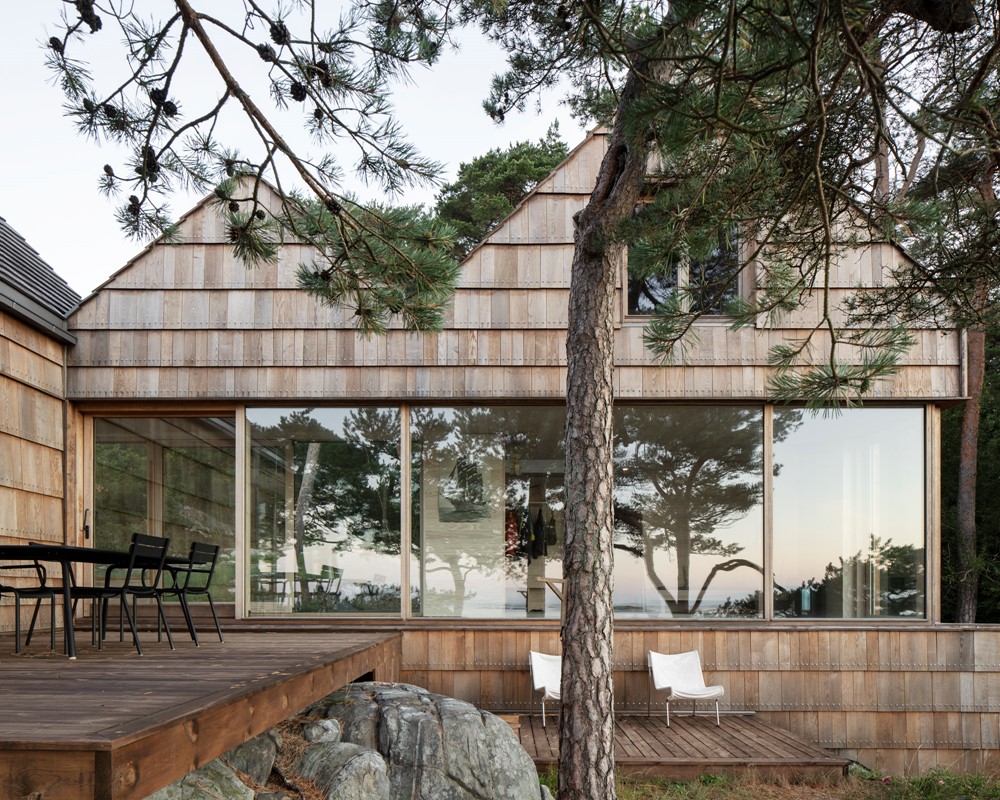
Saltviga House by Kolman Boye Architects is a unique building constructed entirely of wood. It was created as an experiment driven by curiosity about caring approaches and constructed from the most beautiful leftover materials in the world.
The wooden house, which is named after its location on the Saltviga inlet on Norway’s southern coast, was designed by the founders of Kolman Boye Architects, Erik Kolman Janouch and Victor Boye Julebæk. In a unique solution, the roof and exteriors walls are made of offcuts from the production of Dinesen Oak planks. The architects’ inspiration for this house built from leftover wood came from the Norwegian landscape, their curiosity about wood as a material and their responsible approach to architecture. The result is a thoughtful family home that respects its surroundings and speaks to all the senses.
Private residence – Saltviga, the south coast of Norway
Architect: Kolman Boye Architects
Photographer: Johan Dehlin
_______________
Exterior – 12,000 Dinesen Oak and Douglas offcuts
Interior – Wall cladding Dinesen Douglas
Thickness: 28 mm Width: 150 mm.
Random lengths: 1–5 m.
Finish: Light Oil


Situated on a rocky slope in the Norwegian archipelago, in between the sea and the forest, lies a house made from the most beautiful leftover wood in the world. The site is a rough, rocky landscape with dense stands of fir, deciduous trees and scrubs. With the sea on one side and the forest on the other, the Saltviga House blends naturally into its setting.
The architects aimed to create a beautiful, robust and well-adapted building with a thoughtful, caring and mindful approach to its setting. Saltviga House is not just a visual treat but also activates the senses of hearing, touch and smell in its materiality and co-existence with the landscape.

The house is constructed in five levels in order to adapt to the landscape and terrain. Every part of the building has a purpose and forms a connection to the surroundings. The existing landscape played a key role in the architectural design, which aimed to minimise the impact of the building on the natural setting. The narrow paths that run across the forest floor, shaped by the owners of the site over generations, remain untouched, and the architecture accommodates the natural view of the sea in between the trunks of the old trees. Thus, the occupants can enjoy the sheltered, sunny nooks that emerge in combination with the preserved trees and beautiful winding paths through rocks and scrubland.




The unique roof and exterior walls, made from offcuts from the production of Dinesen Oak planks, give the building a distinctive character. Throughout, the design, development and construction of the building were guided by care and respect, especially for the wood.

Just as the small oak offcuts were given a functional role, Douglas fir was assigned special status in the interior. The narrow formats that naturally emerge when a tree trunk is cut into planks were used to line the walls and ceilings in quiet acknowledgement and utilisation of the natural proportions of the timber. The result is a vibrant interplay of varying colour shades and the delicate fragrance of Douglas fir. The use of narrow planks in short lengths was deliberate and reflects the architects’ appreciation of the value of the timber and their dedication to using as much as possible of the felled tree. Just as importantly, they wanted to give the owners of the house a sense of well-being and a connection to nature, both indoors and out.



This nod to nature is also evident in interior solutions such as shelves, bookcases and steps and in the custom-designed kitchen with fronts made from Douglas offcuts. The offcuts serve a purpose in both interior and exterior solutions, and the goal of treating nature’s resources with care in architecture has been achieved by finding functional uses for the wood in every detail.

